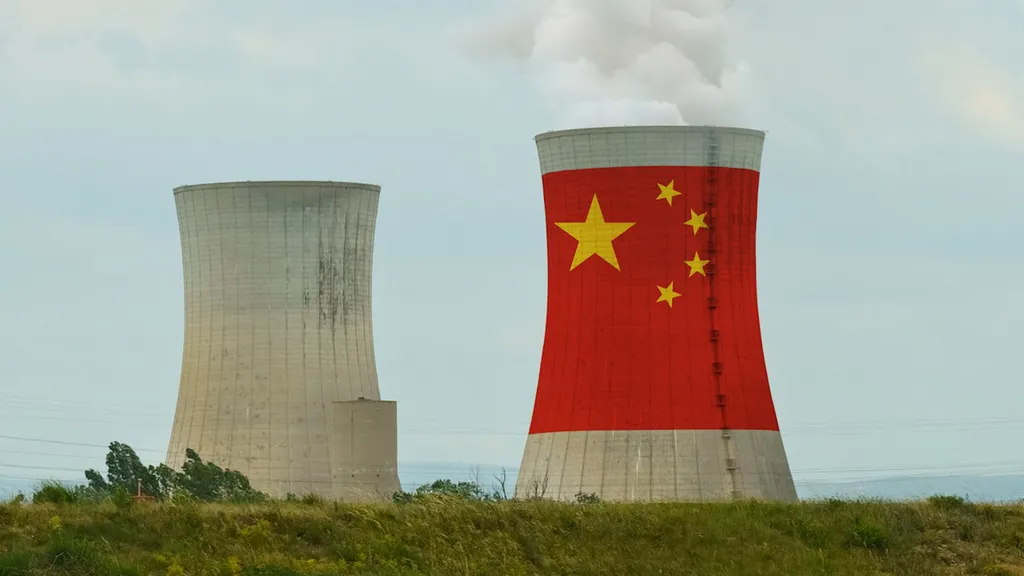In the heart of China’s nuclear energy sector, a quiet revolution is underway, one that promises to reshape the future of uranium mining and, by extension, the global energy landscape. At the forefront of this transformation is Xue-bin Su, a leading figure from the China Nuclear Uranium Corporation in Beijing, who has been instrumental in advancing uranium hydrometallurgy technologies. His recent work, published in the journal *He huaxue yu fangshe huaxue* (translated as *Inorganic Chemistry and Chemical Engineering*), offers a comprehensive review and a tantalizing glimpse into the future of uranium extraction.
Uranium, a critical strategic resource, is the lifeblood of nuclear power, a clean energy source that has become increasingly vital in the quest for energy independence and sustainability. As the demand for natural uranium continues to surge, driven by the rapid expansion of nuclear power, the need for innovative and efficient extraction technologies has never been more pressing. Su’s research provides a detailed roadmap of China’s journey in uranium hydrometallurgy, highlighting the evolution of technologies that have significantly enhanced the efficiency and sustainability of uranium mining.
The journey began in the 1950s with the agitation leaching process, a method that, while effective, was plagued by high energy consumption and large tailings volumes. “The early days were challenging,” Su notes, “but each iteration brought us closer to our goal of sustainable and efficient uranium extraction.” By the 1980s, the introduction of heap leaching technology marked a significant milestone, increasing the recovery rate of granite-type uranium deposits in southern China to an impressive 85%.
The real game-changer came in the 1990s with the development of in-situ leaching technology, a revolutionary approach that has transformed the mining landscape. By injecting leaching agents directly into the ore layer through injection wells, this method achieves “green mining with ‘no uranium visible,'” as Su describes it. The results are staggering: resource utilization has surpassed 75%, and production costs have been slashed by 40%.
The 21st century has seen a flurry of breakthroughs, each addressing the unique challenges posed by different types of uranium deposits. In the Ordos Basin, CO2+O2 in-situ leaching technology has tackled the issue of high leaching agent consumption in high carbonate sandstone uranium deposits. Meanwhile, in the Yili Basin, innovative technologies have been developed to efficiently mine sparse and multi-layer uranium deposits, solving a world-class problem and leading to the establishment of China’s first thousand-ton level green uranium mine.
For polymetallic associated uranium deposits in Guyuan, oxygen pressure acid leaching technology has been a game-changer. “We’ve seen uranium leaching rates increase above 90% and molybdenum leaching rates soar from less than 30% to over 80%,” Su explains. This technological leap has not only enhanced the efficiency of uranium extraction but also unlocked the potential of associated minerals, opening new avenues for resource utilization.
Looking ahead, the future of uranium mining in China is poised for further transformation, with a focus on green upgrading, intelligent transformation, and intensive development. Su envisions the establishment of a fourth-generation uranium hydrometallurgy technology system, one that will propel China to the forefront of original technology innovation. Key areas of focus include deep immersion mining technology for depths of around 1000 meters, the development of complex co-occurring radioactive mineral resources, and the construction of intelligent uranium mines.
The implications of these advancements extend far beyond China’s borders. As the global energy sector grapples with the challenges of sustainability and efficiency, the innovations spearheaded by Su and his team offer a beacon of hope. By pushing the boundaries of uranium hydrometallurgy, they are not only shaping the future of nuclear energy but also paving the way for a cleaner, more sustainable energy landscape.
In the words of Su, “The journey is far from over, but each step brings us closer to a future where uranium mining is not just efficient and sustainable but also intelligent and integrated.” As we stand on the brink of a new era in energy, the work of Su and his colleagues serves as a testament to the power of innovation and the promise of a brighter, more sustainable future.
